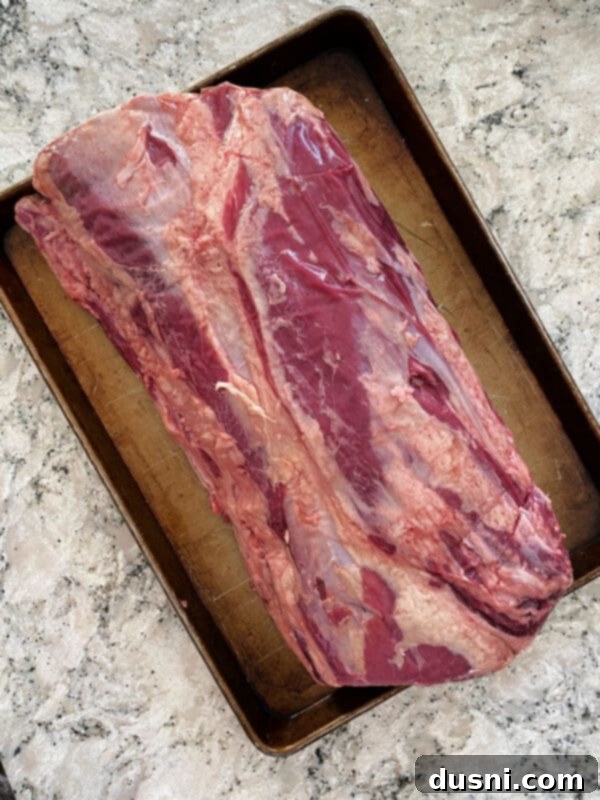Mastering the Italian Style Prime Rib Roast: A Family Tradition for Unforgettable Meals
Transform your special occasions into culinary masterpieces with this foolproof Italian Style Prime Rib Roast. This cherished family recipe guides you through a simple yet elegant process, starting with a crucial sear, followed by a savory Italian spice rub, and culminating in a slow, gentle roast that guarantees exceptional flavor and tenderness every time. Say goodbye to guesswork and hello to a perfectly cooked prime rib.
Discover the secrets to achieving a succulent, rare prime rib that remains juicy and tender, along with an ingenious method to bring individual slices up to temperature, ensuring everyone at your table enjoys their preferred doneness. This isn’t just a recipe; it’s an heirloom of flavor and tradition.
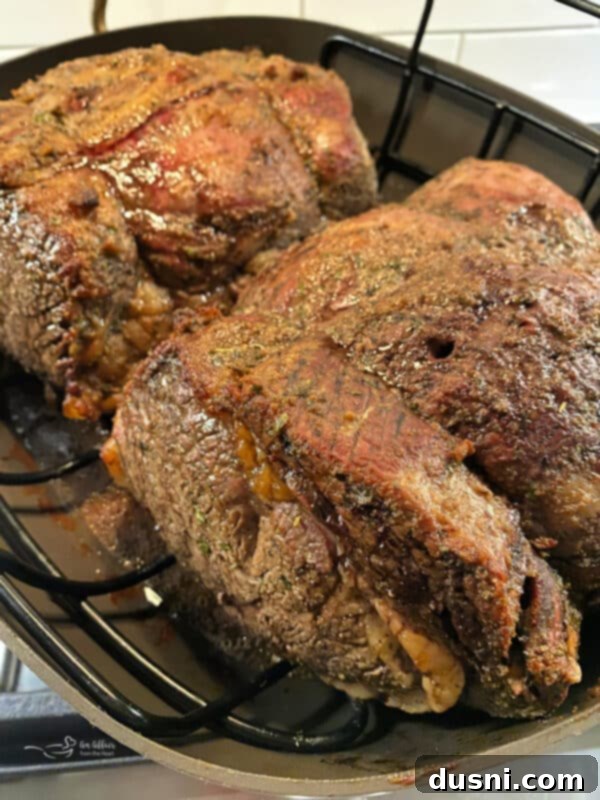
Prime Rib isn’t just a meal; it’s the centerpiece around which cherished memories are made. For our family, this Italian Style Prime Rib Roast is more than just a dish; it’s a culinary legacy passed down from my dear Mother and Father-in-Law. This recipe carries the warmth of countless holiday gatherings, especially those magical Christmases spent at their farm in Iowa, where the aroma of roasting beef filled every room. I first documented this incredible recipe back in 2012, hoping to share its magic with others.
The passing of my Father-in-Law in 2018 left a void that is still felt deeply by all of us. Yet, his spirit lives on through traditions like this prime rib. We continue to prepare this magnificent roast during the holiday season, a practice I hope my children will one day embrace and carry forward, ensuring that his memory, and the joy of this meal, endures for generations to come.
A Timeless Family Tradition: My Original Prime Rib Story from 2012
Even as I meticulously update and refine this post for a modern audience, I’ve chosen to preserve the essence of my original story. It’s a heartfelt recollection that adds depth and sentiment to this recipe. Feel free to immerse yourself in the journey behind this dish, or if you’re eager to start cooking, simply scroll down to the printable recipe card for the full instructions.
Indeed, your eyes are not deceiving you—that magnificent cut of beef you see is a whopping 24 pounds of prime rib! For as long as I can remember, my in-laws have made prime rib the star of their Christmas dinner. Before experiencing their exquisite preparation, I had never tasted prime rib in my life. And after that first revelatory bite, any prime rib I ordered at a restaurant inevitably fell short, leading to consistent disappointment.
They truly mastered the art of cooking it, and to this day, their method remains unparalleled in my eyes. It shouldn’t surprise me, though. When it comes to in-laws, I truly hit the jackpot. My husband’s family is simply wonderful, and I thank God for them every single night. My Father-in-Law, Denny, particularly loved reading my blog. He always got a kick out of my food photography during visits, often teasing, “Don’t ‘cha wanna take a picture of that one, Kala?”
That year, I made it my mission to document every step of their prime rib preparation, with the invaluable help of my husband, Brian. If you aspire to create a prime rib roast that will genuinely ‘wow’ a crowd and become a legendary dish in your own home, then you’ve come to the right place. This is what it takes to achieve that level of culinary excellence!
Essential Ingredients for the Perfect Italian Style Prime Rib Roast
Below, you’ll find a detailed list of all the ingredients you’ll need to create this show-stopping prime rib. For precise measurements and step-by-step instructions, please refer to the comprehensive printable recipe card located at the very end of this post.
- 4-5 pound Rump or Prime Rib Roast – When selecting your roast, aim for a bone-in prime rib for superior flavor and moisture retention. Your local butcher is an invaluable resource for choosing the best cut and any necessary trimming. Beef is graded primarily on the amount of fat marbling, which directly impacts tenderness and flavor. Look for these grades:
- Prime: The highest grade, boasting at least 8% intramuscular fat, resulting in exceptional tenderness and a rich, buttery flavor. This is often the preferred choice for special occasions.
- Choice: A high-quality grade, widely available and still offering good tenderness and flavor, though with slightly less marbling than Prime.
- Select: A leaner grade, generally less tender and flavorful than Prime or Choice due to less marbling.
For this recipe, a Prime or Choice grade will yield the best results, ensuring a truly memorable roast.
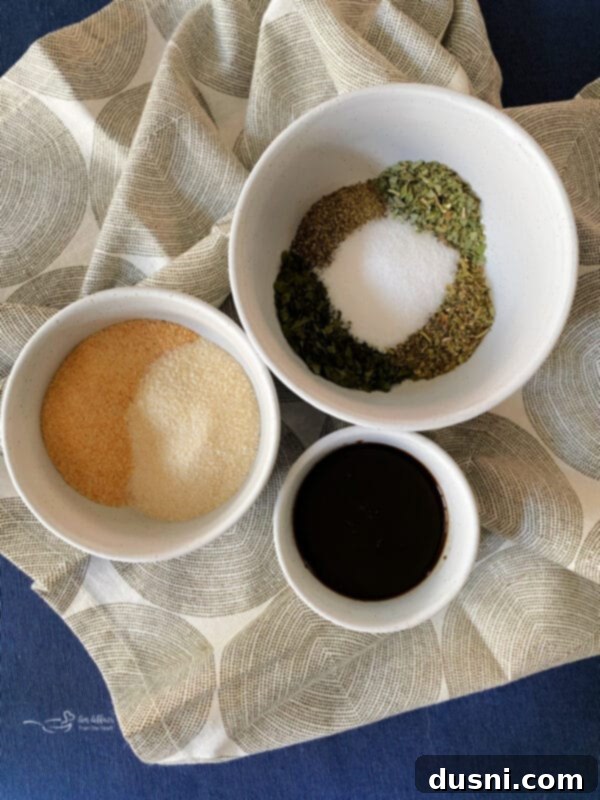
- Worcestershire Sauce – This classic sauce adds a deep, savory, umami flavor that perfectly complements the beef, forming the ideal base for our spice rub.
- Homemade Italian Herb and Spice Mix – This aromatic blend is crucial for our “Italian Style” designation. It includes dried parsley flakes, basil, freshly ground black pepper, a good quality Italian seasoning blend, kosher salt (for even seasoning), garlic powder, and onion salt. Together, these spices create a fragrant crust that enhances every bite.
- Au Jus Mix – While we’ll make some from the drippings, having a packet of Au Jus mix (McCormick is a reliable favorite) on hand is excellent for supplementing or for creating extra servings, ensuring there’s plenty of rich sauce for everyone.
- Beef Bouillon Cube – Dissolved in 1 cup of water, this forms the foundation of our homemade au jus, boosting the beefy flavor. Alternatively, you can use 1 cup of high-quality beef broth or beef stock for an even richer base.
Crafting Culinary Perfection: How to Make the Best Italian Prime Rib Roast

STEP ONE: Prepare the Roast and Initial Sear Begin by removing your prime rib roast from the refrigerator at least 1-2 hours before cooking. This crucial step allows the meat to come to room temperature, ensuring more even cooking throughout. Place the roast, fat side up, on a rack in an ungreased shallow roasting pan. Preheat your oven to a high temperature of 450 degrees Fahrenheit and roast for precisely 15 minutes. This initial high-heat sear creates a beautiful, flavorful crust, locking in the precious juices.
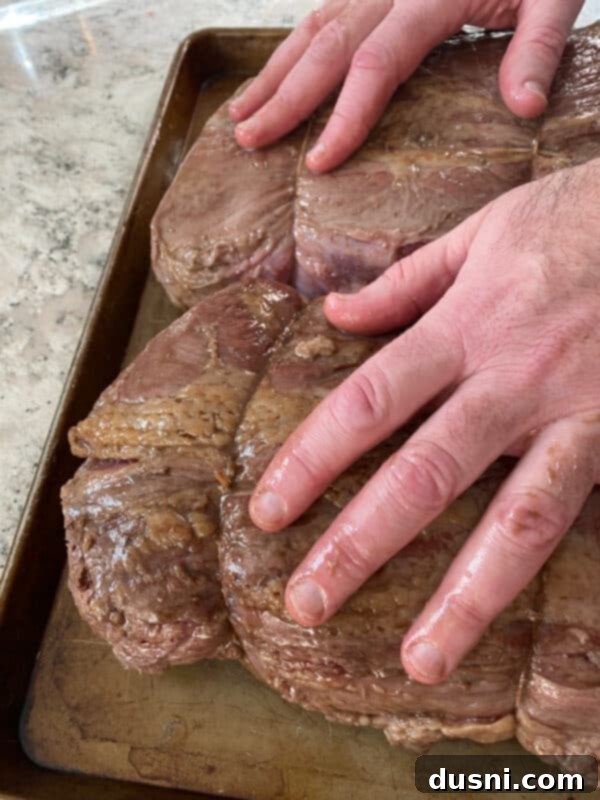
STEP TWO: Apply the Flavorful Rub Carefully remove the searing hot roast from the oven. While it’s still warm, generously rub the entire surface of the prime rib with Worcestershire Sauce. This provides a tangy, savory base that adheres perfectly to the spices.

In a separate small bowl, combine your dried parsley flakes, basil, black pepper, Italian seasoning, kosher salt, garlic powder, and onion salt. Once thoroughly mixed, sprinkle this aromatic herb and spice blend over the Worcestershire-coated roast, massaging it in gently to create an even, flavorful crust on all sides.

STEP THREE: Low and Slow Roasting to Perfection Immediately after applying the rub, reduce your oven temperature to a gentle 250 degrees Fahrenheit. Return the seasoned roast to the oven and continue cooking for approximately 15 minutes per pound. This extended, low-temperature cooking method is key to achieving a beautifully tender, medium-rare roast. Keep in mind that cooking times can vary based on your oven and the roast’s starting temperature and shape, so using a meat thermometer is critical.
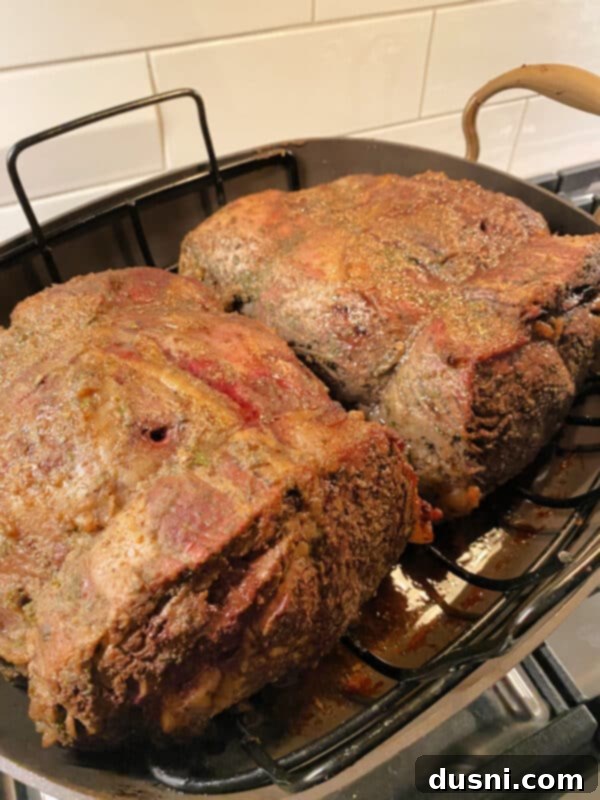
Utilize an instant-read thermometer to accurately measure the internal temperature of the thickest part of the roast, avoiding the bone. For a perfect medium-rare, aim for an internal temperature between 120-125°F (49-52°C) when you remove it from the oven. Remember, the roast will continue to cook as it rests, so pulling it out slightly under your desired final temperature is crucial. After removing, let it rest, loosely tented with foil, for at least 20-30 minutes before carving. This allows the juices to redistribute, ensuring maximum tenderness and flavor.
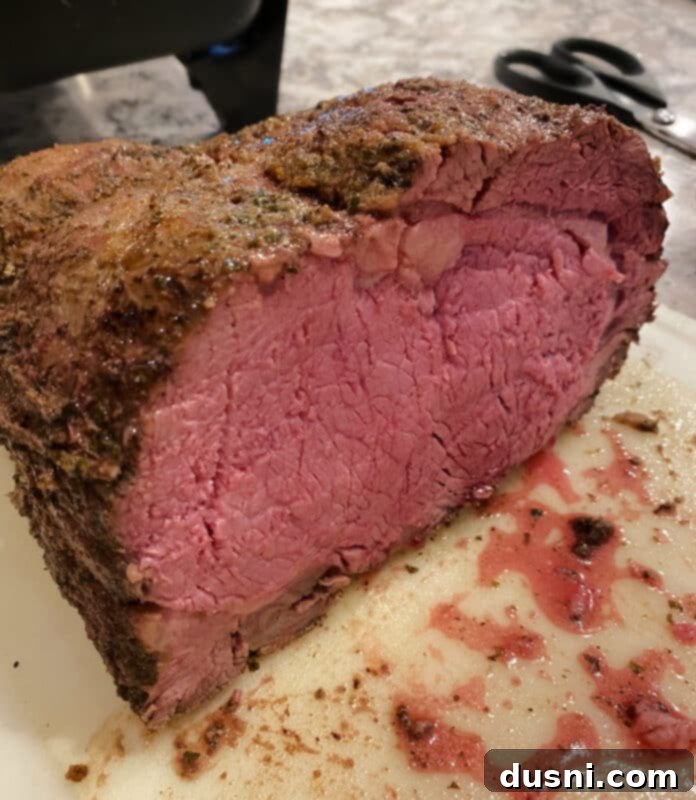
To craft your own rich Au Jus: After the roast is removed, carefully skim any excess fat from the pan drippings. Return the flavorful drippings to the pan. Combine these with your dissolved beef bouillon cube and water (or beef broth/stock). Simmer gently, scraping up any browned bits from the bottom of the pan, until well combined and heated through. This homemade au jus adds an unparalleled depth of flavor.
For those times when you need extra Au Jus, or simply prefer the convenience, McCormick au jus packets are an excellent option. Prepare them according to the package instructions, and you’ll have a delicious, supplemental sauce ready in minutes.

To cater to everyone’s preference for doneness, we employ a simple yet brilliant technique. We gently heat the prepared au jus in an electric skillet. As we carve the prime rib into individual slices, we briefly dip each slice into the warm au jus. This quickly brings the meat up to a more desired temperature for those who prefer it beyond medium-rare, without overcooking or drying it out. It takes mere seconds and ensures every guest receives a perfectly warmed, succulent slice of roast.

Love This Recipe? Pin It for Later!
If this delectable Italian Style Prime Rib Roast recipe has captured your heart, make sure you don’t lose it! Pin it to your favorite Pinterest recipe board now, so it’s always at your fingertips for your next holiday feast or special gathering!
Frequently Asked Questions About Prime Rib Roast
What is the difference between prime rib and standing rib roast? The terms “prime rib” and “standing rib roast” are often used interchangeably, but there’s a subtle distinction. “Standing rib roast” refers to the cooking method, specifically how the roast is positioned in the pan – standing on its rib bones. “Prime rib,” on the other hand, describes a specific cut of beef originating from the rib section of the cow. A whole prime rib typically comprises ribs 6 through 12 and is considered the crème de la crème of rib roasts due to its rich marbling and tenderness. Ribs outside this specific range might be called a “rib roast” but not truly a “prime rib.” Furthermore, a prime rib always includes the rib bones, whereas a general rib roast may be deboned.
What cut of meat is prime rib, exactly? Prime rib is a remarkably tender and flavorful cut sourced from the loin section of the beef ribs. A full prime rib consists of 6 to 7 ribs (typically ribs 6 to 12), and its weight can range anywhere from 12 to 16 pounds, making it ideal for feeding a large group. It’s sometimes referred to as a “ribeye roast” when boneless, as individual ribeye steaks are cut from this same muscle. Traditionally, prime rib is slow-roasted to perfection and served as a grand entrée, celebrated for its rich flavor and succulent texture.
How is prime rib best cooked for optimal flavor and texture? Prime rib is universally celebrated for its best presentation when cooked to a rare or medium-rare doneness. The ideal cooking method involves slow roasting to ensure the meat cooks evenly throughout, developing a delightful, savory crust while maintaining a tender, juicy interior. The internal temperature for a perfect medium-rare prime rib is typically around 120-125°F (49-52°C) when removed from the oven, as it will continue to rise during resting. While many prefer it rare, you can adjust the final temperature to suit individual preferences. The “prime” method often involves a high initial sear (around 450°F) followed by a lower temperature roast (325°F). Our recipe utilizes a “gourmet” or “reverse sear” method with an initial high sear and then a very low temperature (250°F) for a longer duration, which can achieve even more uniform doneness from edge to edge.
Expert Tips and Tricks for Your Best Prime Rib Roast
- Enhance Your Au Jus: Don’t hesitate to use extra au jus packets if you find yourself needing more of that rich, savory sauce. Prepare them according to the package instructions and blend seamlessly with your homemade au jus from the drippings for an even more abundant supply.
- Homemade Creamy Horseradish Sauce: Many prime rib aficionados swear by the piquant complement of horseradish sauce. Consider whipping up your own creamy horseradish sauce from scratch using your favorite recipe. The tangy kick perfectly cuts through the richness of the beef.
- Perfect Side Dishes: The right accompaniments elevate a prime rib dinner from excellent to extraordinary. Some of my personal favorites that pair beautifully include rich Potatoes Au Gratin, a comforting Cauliflower Gratin, and, of course, classic Mashed Potatoes. And to truly complete the experience, a robust glass of red wine is an absolute must!
- Leftover Brilliance: Should you be fortunate enough to have prime rib leftovers (a rare treat!), store them promptly in an airtight container in the refrigerator for up to 5-7 days. For longer storage, cooked prime rib freezes exceptionally well for up to 6 months. These delectable leftovers are incredibly versatile – perfect for gourmet sandwiches, adding depth to hearty soups, or transforming into a luxurious batch of beef tips and gravy.
- Carving with Confidence: Always use a very sharp carving knife. For bone-in roasts, first slice the meat off the bone in one piece, then slice against the grain into individual servings. Slicing against the grain ensures maximum tenderness.
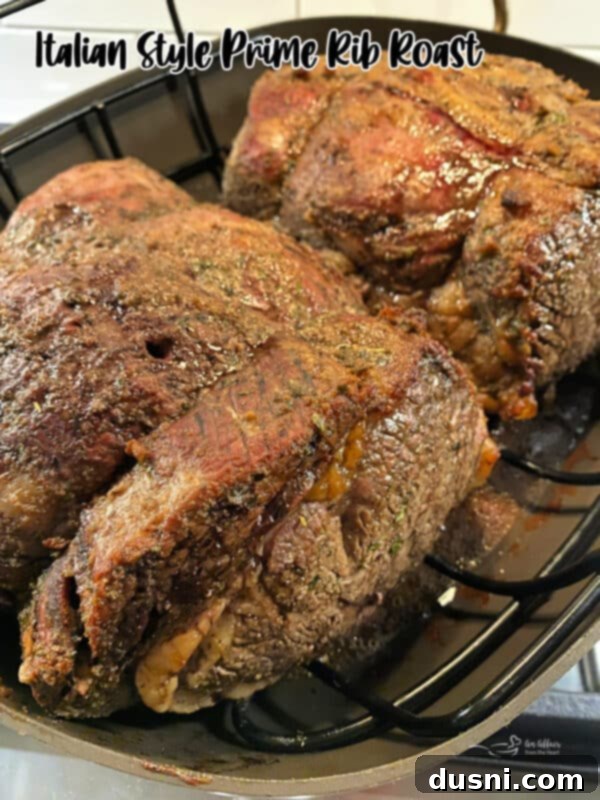
I sincerely hope that this cherished family recipe for Italian Style Prime Rib brings as much joy and deliciousness to your table as it has to ours. Its straightforward approach and incredible results will undoubtedly make it one of your go-to dishes for holiday dinners, special occasions, or whenever you desire an extraordinary meal. Enjoy the tradition!

LIKE THIS RECIPE?
Don’t forget to give it a ⭐️⭐️⭐️⭐️⭐️ star rating and
leave a comment below the recipe!
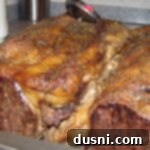
Print Recipe
Italian Style Prime Rib Roast
Equipment
-
Thermapen ONE (or other instant-read digital thermometer)
-
Roasting Pan with Rack
-
Small Bowl
-
Electric Skillet (optional, for warming slices)
Ingredients
- 4-5 pound Prime Rib Roast
- 1 T. Worcestershire Sauce
- 1/4 teaspoon each: dried parsley flakes basil, black pepper, Italian seasoning
- 1 teaspoon Kosher salt
- A generous sprinkling of garlic powder and onion salt
- 1 beef bouillon cube dissolved in 1 cup of water (or 1 cup beef broth/stock)
- Au Jus Packet for extra if desired (e.g., McCormick)
Instructions
-
Preheat oven to 450 degrees F (232°C).
-
Take the prime rib roast out of the fridge and allow it to come to room temperature for 1-2 hours before cooking.
-
In a small bowl, mix together dried parsley flakes, basil, black pepper, Italian seasoning, and kosher salt. Set this spice blend aside.
-
Place the prime rib roast, fat side up, on a rack in an ungreased roasting pan. Bake at 450 degrees F for 15 minutes to sear the meat and create a crust.
-
Reduce the oven temperature to 250 degrees F (121°C).
-
Remove the prime rib from the oven. Rub the entire roast with Worcestershire Sauce. Then, give the meat a generous sprinkling of onion salt and garlic powder, rubbing it in thoroughly on all sides. Finally, sprinkle with the reserved spice mixture and rub it into the exterior of the roast.
-
Place the seasoned roast back in the oven and cook for approximately 15 minutes per pound. This timing aims for a Medium-Rare roast. Use a digital meat thermometer to monitor the internal temperature, targeting 115-120 degrees Fahrenheit (46-49°C) for removal from the oven (it will continue to cook as it rests). Once removed, loosely tent with foil and allow to rest for 20-30 minutes before carving.
-
To make your own Au Jus: Skim the fat from the drippings in the roasting pan, then return the drippings to the pan. Combine with the beef bouillon (dissolved in water) or beef broth/stock. Heat gently on the stovetop, stirring to incorporate all the rich flavors.
-
For extra Au Jus, prepare McCormick au jus packets according to their package instructions.
-
We recommend heating extra au jus in an electric skillet. As you carve the roast, add individual slices to the warm au jus for just a couple of seconds. This quickly brings the meat up to a more desired temperature for those who prefer it warmer or slightly more done, without sacrificing tenderness or juiciness.
Notes
Nutrition
This recipe was originally posted on January 4, 2012. It has been thoroughly updated to enhance user experience and reshared on December 21, 2022.

